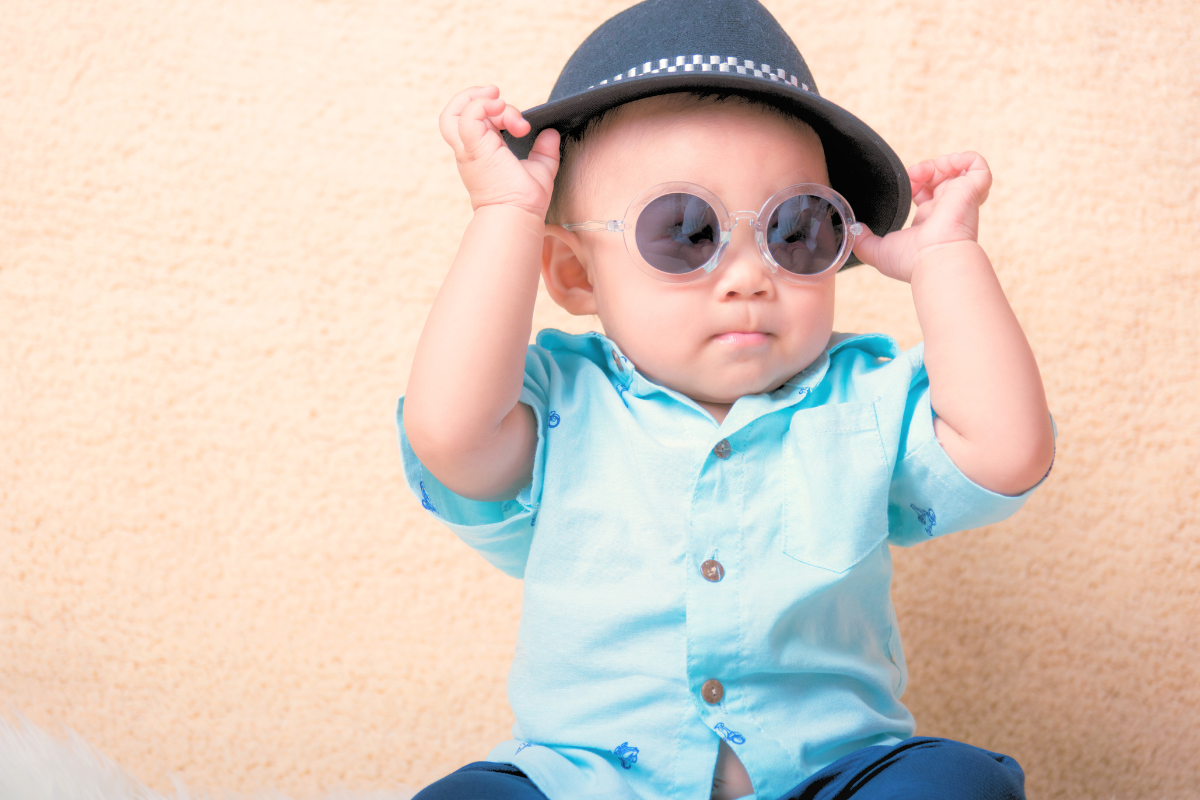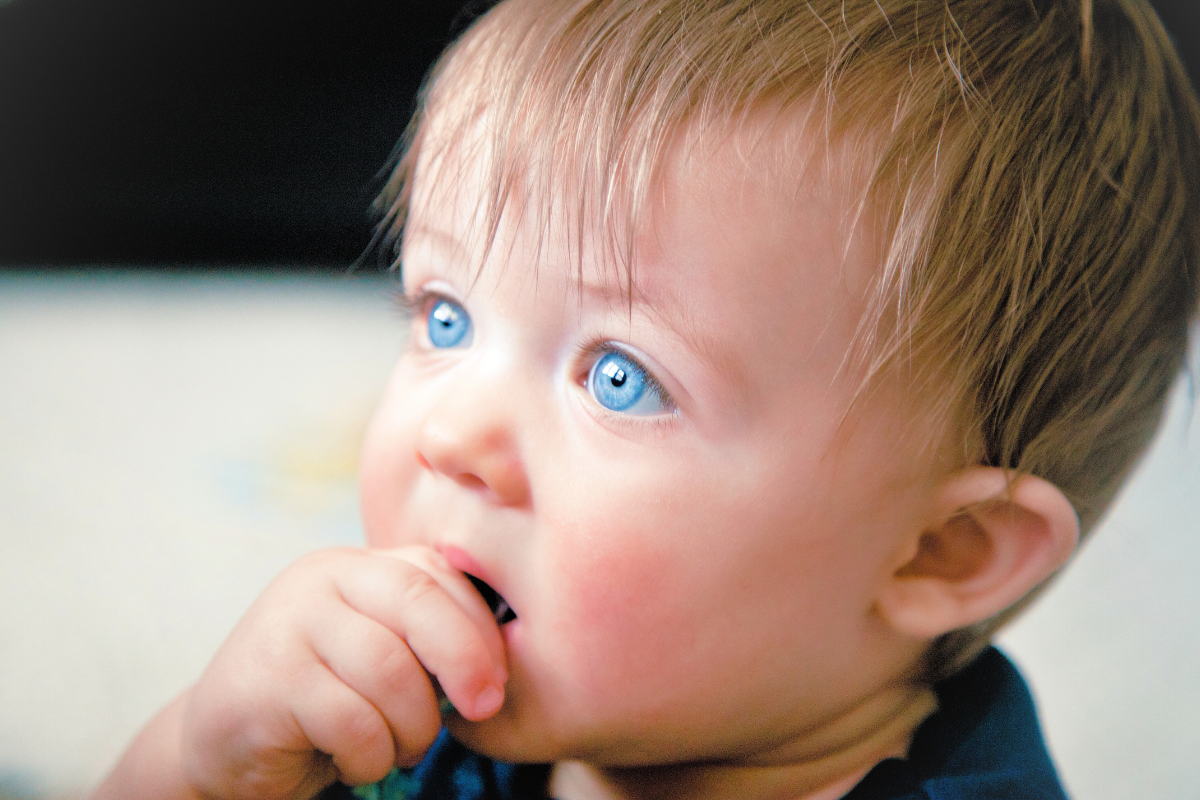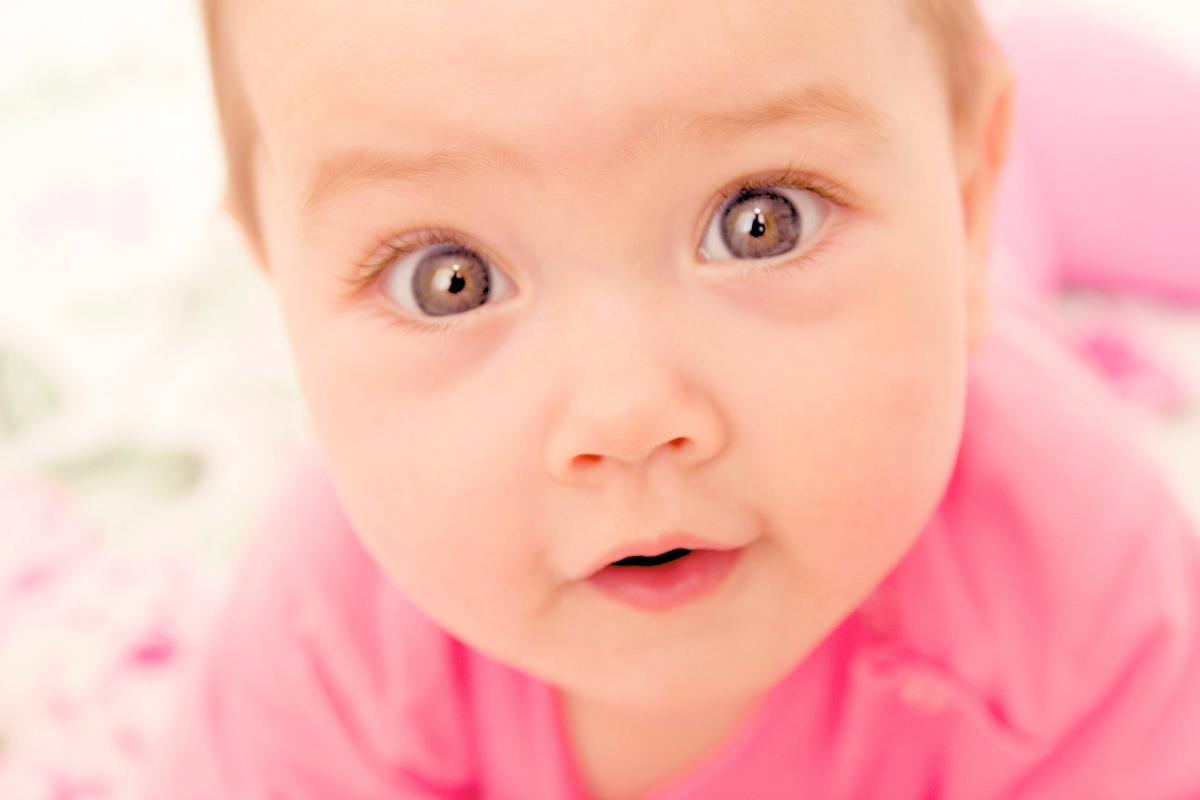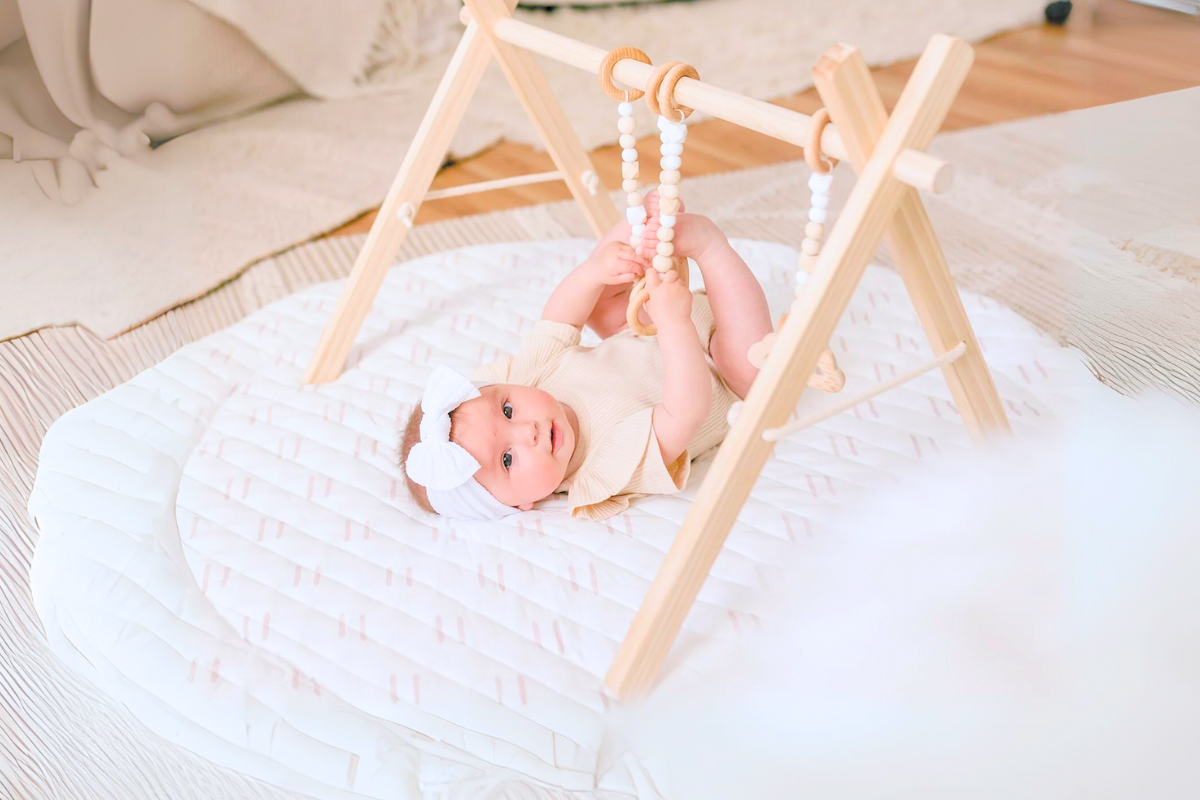When Can Infant See? Month-by-Month Baby Vision Milestones
Ever wondered what’s happening behind your newborn baby’s curious gaze? From spotting shapes early on to developing normal vision, every milestone in your little one’s first year journey is pretty fascinating to witness.
So, are you ready to explore the world from your baby’s point of view? Let’s break it down and explore how most babies achieve healthy eyes, along with practical ways to support their growth naturally.
What Can Babies See Month by Month?

During their first year, infant vision develops rapidly, moving from blurry shadows to recognizing familiar objects, bright light, and even tracking moving objects.
Infant vision – birth to one year – is undergoing incredible changes that help them connect with the world in new ways. Here’s a month-by-month breakdown for your reference.
Newborns (0-2 Months)
Your baby's eyes don’t start out fully developed. Instead, their vision develops gradually, with noticeable improvements each month.
At birth, newborn babies see mostly shadows and contrasts within 8-12 inches of their face. Your baby's eyesight simply isn't as good yet. This is why high-contrast images, like black-and-white toys, catch their attention so easily.
Their ability to recognize familiar objects, such as your face, is only starting to develop during this phase. Not that it's hard for young babies. According to research from the American Academy of Pediatrics, newborns have a natural draw toward faces, which encourages bonding and social connection.
In other words, they’re practically hardwired to see faces.
This is why newborns stare at you like they’re studying every detail – because they actually are. A 2007 study revealed that even newborn babies can perceive facial expressions, though they may not completely understand this yet.
3-4 Months: Color Vision

By 3-4 months of age, most babies begin seeing a broader color spectrum. This is when your baby's color vision development is really starting to bloom.
Reds, greens, and blues are now coming into view, thanks to the development of cone cells in their retinas. Since a baby’s ability to see colors is getting better, it’s a critical period to introduce colorful things.
For instance, toys with vibrant reds or deep blues can help them practice focusing and recognizing different hues.
This is also the age when they start tracking moving objects. You’ll notice their eyes following a toy or your hand as it moves across their line of sight, improving their coordination.
Feel free to encourage this by playing with a moving object back and forth in front of them. Their fascination with motion at this stage is all part of their visual growth.
5-6 months: Facial Expressions
By 5-6 months, an infant's eyes have sharpened enough for them to start recognizing emotions in others – enough to actually match it.
They can match a cheerful laugh with a smiling face or a fussy cry with a sad one, even when the voice and face belong to different people. It’s like they’re mini detectives piecing together clues about how others feel – and they're surprisingly good at it.
At this age, their visual system takes on a bigger role in social bonding. Babies spend more time looking at faces and studying expressions, which helps them connect emotionally and interact with those around them.
It’s basically their first lesson in empathy, brought to you by their rapidly growing brain and those tiny but mighty infant eyes.
7-9 Months: Depth Perception

By the time your baby enters their 6th month, their color perception will have greatly improved. They’re also starting to develop depth perception – also known as the ability to sense distances.
Around this time, babies can achieve close to 20/40 vision, allowing them to spot familiar faces and favorite toys from further away. If you wave to them across the room, you might just notice them light up in recognition.
Hand-eye coordination starts to come into play as well. Babies at this age reach and grasp for toys with greater accuracy, which strengthens their visual-motor skills and helps them better understand the world around them.
This is an ideal time to introduce toys that encourage reaching, like Poppyseed Play’s Wooden Baby Gym, which stimulate hand-eye coordination while keeping them engaged.
10-12 Months: Nearly Developed
As your baby approaches their first birthday, their vision starts looking a lot more like yours: sharp, detailed, and capable of spotting action from across the room.
Most babies at this age develop nearly 20/20 vision, allowing them to recognize familiar objects and faces with ease, even at a distance. That favorite toy? They’ll notice if it’s out of place faster than you can say “peek-a-boo.”
At this stage, their visual acuity extends to smaller details in their environment. They can pick up on subtleties like the patterns on your shirt or the tiny crumbs they just dropped on the floor (don’t worry, they’ll help you find them).
Babies also become more attuned to facial expressions, which helps them interpret emotions and deepen their social interactions. Their gaze patterns to these features are critical to building vocabulary, as infant vision is linked to the ability to match words with objects and actions.
Research from the American Optometric Association shows that there’s value in giving them sensory toys at this age. Objects with varied textures, intricate patterns, and contrasting colors do more than entertain – they encourage visual development and spark curiosity.
How Can Parents Support Visual Development Through Play

These simple activities add valuable stimulation to a child’s day and make playtime purposeful while keeping things fun and engaging. Let’s take a look.
-
Tummy time. Tummy time works wonders for babies’ strength and visual growth. As they lift their heads and look around, they’re building neck and upper body muscles, making it easier to move their heads to follow objects and people. Place toys or soft books in their line of sight on Poppyseed Play’s Infant Play Mat or Linen Play Mat for a fun, visual challenge that gets those eyes tracking.
-
High-contrast and colorful toys. Babies’ early vision can’t pick up on subtle colors yet, so black-and-white toys or bold patterns are perfect attention-grabbers. The sharp contrasts and vivid hues stimulate visual pathways, helping infants focus. Studies even show that contrast-sensitive toys enhance brain-eye coordination early on, even for babies with visual impairment. Try a high-contrast mobile or soft toy, letting those little eyes lock in on something captivating.
-
Baby gyms. Poppyseed Play’s Wooden Baby Gym is more than just an activity center – it’s a mini visual playground. It's got dangling toys and various textures, providing sensory-rich opportunities for visual engagement and motor practice. Babies get to reach, bat, and track objects, naturally supporting their development as they interact.
Common Eye and Vision Problems in Babies
While most children develop healthy eyes, some may experience vision problems. Early detection is key to addressing these issues effectively.-
Amblyopia (Lazy Eye): This condition occurs when one eye doesn’t develop as well as the other, leading to blurry vision.
-
Strabismus (Crossed Eyes): Misaligned infant’s eyes can cause challenges with focusing on moving objects.
-
Refractive Errors: Nearsightedness or farsightedness can affect how clearly babies see.
Premature babies are at higher risk of developmental delays, including conditions like retinopathy of prematurity (ROP), where abnormal blood vessel growth affects the retina. Regular screenings can identify and manage these early on.
Improving Your Child’s Eyesight Naturally
Introducing good habits can also support your child’s eyes and overall visual development. Here are just some ideas. For a more detailed guide, make sure to check out our full guide on how to improve your child’s eye health.
1. Foster a Vision-Friendly Home
Did you know that small adjustments around the house can help maintain healthy eyes?
-
Use soft, bright lighting to reduce eye strain.
-
Limit screen time and encourage frequent breaks.
-
Arrange proper seating for reading and play.
2. Regular Eye Exams
Routine check-ups with an eye doctor can detect potential eye and vision problems, such as nearsightedness or astigmatism. Early detection lets you take corrective measures as soon as possible. When they’re older, they can get glasses or contact lenses to improve their vision and prevent further strain.
3. Outdoor Play and Natural Light
Spending time outdoors exposes your baby to natural bright light, which supports eye health. Studies show that outdoor activities can reduce the risk of nearsightedness in children.
Final Thoughts
Watching your baby’s vision sharpen over the first year is like rediscovering the world through their curious little eyes. Every milestone—like recognizing faces or following objects—adds depth to their understanding and connection with their surroundings.
To encourage this growth, fill their world with engaging visuals, contrasting colors and textures, and playful interactions that spark their curiosity.
Remember, every moment spent fostering their visual exploration lays the groundwork for a lifetime of learning. So keep it playful, keep it stimulating, and enjoy watching their unique world come into focus!
FAQs
1. Do newborns see colors, or is their world black and white?
Newborns mostly see in black, white, and shades of gray. Their color vision starts developing around 3-4 months, adding some vibrancy to their growing world.
2. How far can a newborn see clearly?
In those early weeks, newborns can see objects about 8-12 inches away—just enough to make out a parent’s face during feeding or snuggles.
3. Are there early vision screenings for infants?
Yes, pediatricians often perform vision screenings early on to check eye health and development, sometimes starting as early as a few months.




